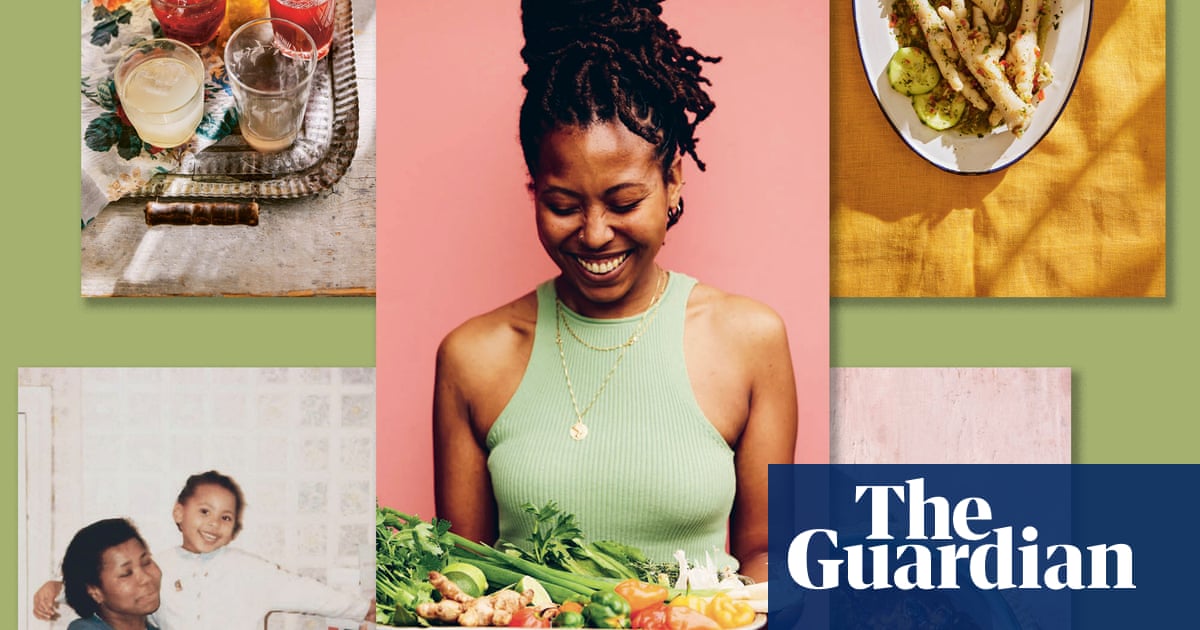Hello and welcome to The Long Wave. This week, I dived into Caribe, a remarkableCaribbean cookbook that is simultaneously history, memoir and visual masterpiece. I spoke to the author, Keshia Sakarah, about how she came to write such a special book.
Caribe is not only a recipe book of Caribbean dishes, it is also a homage to family as well as an account of history and migration. That history is both short and long: it charts Sakarah’s Caribbean community in her home city of Leicester, England, and of each individual country in which the recipes originated. And there is another layer of history: that of the dishes and ingredients – how they came about and how far they travelled on the tides of colonialism and immigration.
This was the most edifying part for me, as it revealed the expanse of cuisine around the world and its commonalities. For instance, I had no idea that kibbeh, a meatball rolled in bulgur – that I only understood as a niche Levantine dish – exists in the Dominican Republic as kipes or quipes. It was brought to the Caribbean by immigrants from the Middle East in the late 19th century. Who knew? Sakarah did. She discovered that fact during a multiyear research odyssey across the islands.
Sakarah’s love for cooking, and the culture behind it, comes from early exposure. She is an only child of Barbudan and Montserratian descent and spent much of her childhood with her retired grandparents, who were “enjoying life, cooking and eating. I would go to the allotment and the market with them. That planted that seed.” The result was a fascination with Caribbean food that flourished in adulthood, when Sakarah decided to be a chef and an archiver of Caribbean cuisine. On her travels, she found her passion mirrored by those she engaged with. “I would just have conversations with people about food,” she says. “People wanted to tell stories and were excited that I was interested.” The process of on-the-ground research was “covert and natural” because locals sensed her curiosity wasn’t “extractive”.
Crops, colonisers and resistance
“The linking of the history was quite surprising to a lot of people,” Sakarah says, “because they had never considered it. Especially in our community, we have no idea why we eat what we eat.” In one particularly enlightening section of the book, Sakarah details how sweet potatoes, cassavas and maize were unfamiliar to Spanish colonisers in the Dominican Republic in the late 1400s.
When they established their first settlement, these colonisers relied on the farming capabilities of the Indigenous Taíno people, who were skilled in crop generation. In an act of resistance, the Taíno refused to plant the crops, leading to the starvation of the Spanish. However, they returned in subsequent settlements better prepared. The Spanish brought crops and livestock familiar to them in a mass movement of species known as theColumbian exchange, which Sakarah says “changed the face of flora and fauna across the globe”. Caribe is full of such eye-opening vignettes on how the region’s food carries a historical legacy.
Two things struck me as I read the book: I had never seen a single written recipe growing up, and I had not a single idea about where the food I grew up eating came from. Even the recipes handed down to me are not quantifiable by measurements – they are a pinch of this and a dash of that. Everything is assimilated but never recorded. Sakarah wanted to make that record because “when an elder passes, they go with all their knowledge, so it’s important to archive things for the purposes of preservation”.
She wanted the work to feel like an intimate passing on of information, using language, imagery and references that were not that of the outsider looking in. The pictures that accompany the recipes were almost painfully resonant, ones of Black hands casually drawn in a pinching action after scooping up a morsel. One recipe for dal shows an implement that I had only ever seen in Sudan, a wooden rod with a bifurcated bottom, spun in the pot to loosen the grain.
Sign up toThe Long Wave
Nesrine Malik and Jason Okundaye deliver your weekly dose of Black life and culture from around the world
after newsletter promotion
A culinary reminder of home
I say to Sakarah that the longer I am removed from home, the more food plays a complex rooting role in my life, where I hold on to random meals or ingredients from childhood: fava beans, okra, salty goat’s cheese.Foodplays a similar role for her, in ways that she didn’t even realise. Because she grew up with her first-generation grandparents, Sakarah says she feels more Caribbean than British, which shows up in very confusing ways. Researching the book has enabled her “to come to terms with that, because I see the layers in it, and also the beauty of the diaspora”.
One of the main motivations of this book, which represents the various islands in separate chapters, was to show the shared yet diverse expanse of Caribbean food that is often wrongly collapsed as only “Jamaican”. Nor was Sakarah interested in presenting regional dishes as a victim of imperialism, but rather a product of overlapping histories. By doing so, she removed shame and did not attempt to assert identity through cuisine. Sakarah has pulled off a remarkable feat – the book is quietly radical in its presentation of food as something that is not political, but a product of politics. It is simply what everyone eats. “Food isn’t always celebratory and fun and joyful,” she says. Nor is it always an act of cultural resistance: “It just is.”
Caribe by Keshia Sakarah is published by Penguin Books. To support the Guardian, order your copy atguardianbookshop.com. Delivery charges may apply.
To receive the complete version of The Long Wave in your inbox every Wednesday,please subscribe here.
